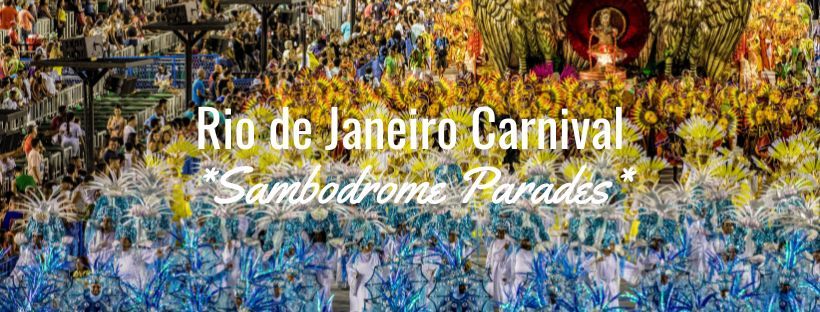
The Sambadrome parades during the Rio de Janeiro Carnival are one of the most iconic and culturally significant events in Brazil. These parades are organized by samba schools and attract millions of spectators and participants from around the world. Here's a detailed explanation of how the Sambadrome parades work during the Rio de Janeiro Carnival.
1. Samba Schools
The Sambadrome parades are performed by samba schools, which are large community-based groups representing different neighborhoods or communities in Rio de Janeiro.
Each samba school has its own distinctive identity, colors, and traditions. These schools are not traditional educational institutions but rather cultural and social organizations that celebrate samba music, dance, and Brazilian culture.
Learn about Rio's most famous Samba Schools
2. Parade Schedule
The Rio de Janeiro Carnival spans several days, but the main Sambadrome parades take place on two consecutive nights: Sunday and Monday of Carnival week. These are known as the "Grupo Especial" or Special Group parades.
Each samba school is assigned a specific time slot for their parade. The order is determined based on a draw held by the Carnival organizers.
Get the 2025 detailed Parades schedule
3. Theme Selection and Preparation
Several months before Carnival, each samba school selects a theme for their parade. This theme can be inspired by historical events, cultural aspects, or contemporary issues.
Samba schools have dedicated teams for costume design, float construction, and choreography. These teams work tirelessly to create elaborate costumes, floats, and performances that align with the chosen theme.
The creation of original samba songs, called "samba-enredo," is an integral part of the preparation. These songs narrate and complement the theme of the parade.
4. Floats and Costumes
The parade features a series of elaborately decorated floats that represent different aspects of the chosen theme. These floats are often massive, towering structures adorned with intricate details.
The costumes worn by samba school members are equally extravagant. They are designed to be visually stunning and often weigh several kilograms. Costume designers pay meticulous attention to every detail.
Learn about Carnival's costumes
5. Parade Order
The parade follows a specific order. It begins with the "comissão de frente" (front commission), a small group of performers who set the stage for the parade's theme. Then, the allegorical floats follow, showcasing the theme in a visual spectacle. Behind the floats come the samba dancers, who perform choreographed routines while singing the school's samba-enredo.
Each samba school typically has thousands of participants, including flag bearers, drummers, and various other performers.
6. Judging and Scoring
36 judges (4 judges for each of the 9 criteria) are stationed along the Sambadrome to evaluate each samba school's performance.
Judges use a specific set of criteria to assign scores, including theme development, music, choreography, costumes, and overall presentation.
The scores are kept secret until the following Wedndesday afternoon when they are publicly announced.
7. Results and Awards
The samba school with the highest total score is declared the champion of the Rio de Janeiro Carnival for that year. Winning is a matter of immense pride and prestige.
The results are announced on the following Wednesday, and the winning samba school celebrates its victory with great fanfare on the next Saturday during the Champion's Parades.
8. Carnival Atmosphere
The atmosphere inside the Sambadrome is electric, with spectators joining in the festivities by singing, dancing, and cheering for their favorite samba schools.
Thousands of people fill the stands, and the energy is palpable throughout the night.
9. Global Spectacle
The Sambadrome parades in Rio de Janeiro are televised and live-streamed, allowing people from around the world to experience the Carnival celebration.
The parades also attract tourists who come to Rio specifically to witness this grand spectacle.
10. Community and Social Impact
Samba schools play a significant role in their local communities, engaging in social projects, supporting charitable causes, and fostering a sense of belonging among their members.
In summary, the Sambadrome parades during the Rio de Janeiro Carnival are a dazzling display of Brazilian culture, creativity, and artistic expression. They require meticulous planning, months of preparation, and the dedication of thousands of people who come together to create a once-in-a-lifetime experience for both participants and spectators.
Remember that Rio de Janeiro gets extremely crowded during Carnival, so it's essential to plan and book accommodations well in advance. To do so, get in touch with a local Brazil Expert now!